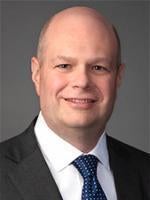Acting Comptroller of the Currency Michael Hsu delivered remarks, titled “Detecting, Preventing, and Addressing Too Big To Manage,” at the Brookings Institution yesterday in which he addressed and offered a possible solution to the too-big-to-manage (“TBTM”) problem.
While noting that “[l]arge banks provide invaluable support to our economy,” Acting Comptroller Hsu went on to proffer that large banks are “bigger and more complex than ever.” However, he noted, “effective management is not infinitely scalable.” He stated that “[t]he most effective and efficient way to successfully fix issues at a TBTM bank is to simplify it – by divesting businesses, curtailing operations, and reducing complexity.”
Acting Comptroller Hsu discussed five signs that a bank may becoming TBTM (although he noted that there are many more):
-
The (im)materiality illusion: when materiality is measured in percentages at a big bank, it can deceive management into thinking a problem is not material;
-
The isolated incident/bad apple illusion: assumption that the problem is isolated rather than that similar problems may be elsewhere in the organization;
-
External vs. internal risk identification: when examiners uncover a bank’s problems more than internal risk does;
-
Hubris, contempt and indifference: senior management indifference “can lead to blind spots and should be a flag”; and
-
Rushed integration and diseconomies of scale: “Integrating systems, processes, and people is easier said than done.”
Acting Comptroller Hsu continued with how he thought TBTM risks should be addressed – ultimately, through divestitures. He stated that having a clear escalation framework would address due process issues as well as separating out “just poorly managed” institutions from TBTM ones. He noted that the OCC is currently using a four-level escalation framework to address supervisory concerns and deficiencies at large banks. Those four levels generally are:
-
MRAs or Matters Requiring Attention issued by examiners as non-public supervisory findings in their examination reports;
-
Public enforcement actions, such as consent orders, and civil money penalties;
-
Restrictions on growth, business activities, capital actions or some combination of restrictions; and
-
Divestiture or breaking up the bank.
Acting Comptroller Hsu stated that, at the point of the fourth level of escalation, the bank “would have had multiple opportunities to address the problem and been publicly motivated to do so, yet fallen short, again” and “evidence of the bank’s inability to manage itself would become overwhelming.”
He concluded his remarks by noting: “’The better a car’s brakes, the faster it can drive safely.’ I believe this is useful to bear in mind as we consider the devilish details and focus large banks on the risks that can cause them to become TBTM.”
Acting Comptroller Hsu did not discuss whether he thinks his four-tier approach is something for which the OCC will issue guidance or proceed with a rulemaking, or whether, as his remarks suggest, this is the current approach at the OCC. Acting Comptroller Hsu’s remarks did not paint all large banks above a certain asset threshold as problematic, but did discuss ultimately harsh results for banks that progress all the way to his fourth tier of action. To possibly inaptly borrow his analogy to a car with better brakes, his ultimate result might not be to build better airbags, but, rather, ejector seats.




 />i
/>i

